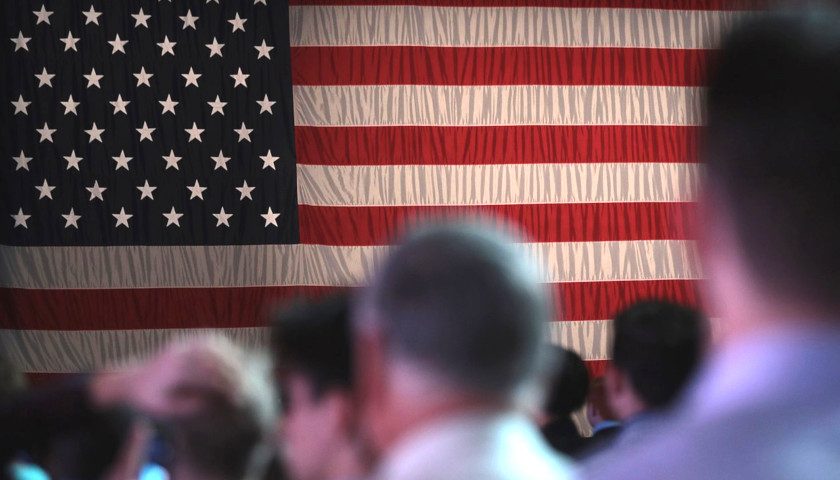by Emily Larsen
Virginia Sen. Tim Kaine said in a tweet Wednesday that the French recognized the U.S. as a nation of immigrants with the Statue of Liberty.
The statue’s French creators intended for the colossus to celebrate independence and enlightenment. It later came to symbolize the promise of immigration.
Fact Check:
French President Emmanuel Macron addressed both houses of Congress, and the Supreme Court heard arguments in a case challenging President Donald Trump’s travel ban Wednesday. Kaine tied the two events to the Statue of Liberty.
As I listen to French President Macron address Congress, I'm struck that it's the same day that the Supreme Court will hear the Muslim travel ban case. The French people recognized the U.S. as a nation of immigrants when they gifted us the Statue of Liberty.
— Tim Kaine (@timkaine) April 25, 2018
“As I listen to French President Macron address Congress, I’m struck that it’s the same day that the Supreme Court will hear the Muslim travel ban case,” he tweeted. “The French people recognized the U.S. as a nation of immigrants when they gifted us the Statue of Liberty.”
While the statue is now associated with the promise of immigration, its French creators did not intend for it to recognize or glorify immigration.
In 1865, French political thinker and abolitionist Édouard de Laboulaye suggested that the people of France build a monument for the U.S. as a gift following the end of the Civil War. He wanted it to celebrate independence and recognize the connection between France and the U.S.
“This monument to independence will be executed in common by the two nations, joined together in this fraternal work as they once were to achieve independence,” he wrote.
Laboulaye hoped that the monument would inspire the French people to learn from the U.S. system and call for democracy in France.
French sculptor Frédéric-Auguste Bartholdi, who designed the colossus, shared Laboulaye’s desire to memorialize the principles of liberty. He originallydevised a lighthouse in the shape of a robed woman with a torch intended for the Suez Canal, called “Egypt (or Progress) Brings Light to Asia,” but plans for the lighthouse fell through. In 1870, Bartholdi began to reshape that design into the Statue of “Liberty Enlightening the World.”
The statue became a symbol of immigration due in large part to American poet Emma Lazarus’ sonnet “The New Colossus,” which is mounted on the base of the statue. Inspired by the plight of the immigrant, Lazarus dubbed Lady Liberty the “Mother of Exiles.” “Give me your tired, your poor/ Your huddled masses yearning to breathe free,” the poem reads.
She composed the sonnet in 1883 for a fundraiser to support the construction of the statue’s pedestal. At the statue’s dedication ceremony in 1886, the only immigrants alluded to were “illustrious descendants of French nobility.” The poem was not read or mentioned.
In 1903, years after Lazarus’ death, “The New Colossus” was engraved on a bronze plaque added to the base of the statue.
Gradually, Lady Liberty became a symbol of the promise of immigration. Those who criticized laws created in the 1920s that placed quotas on the number of immigrants admitted based on nationality evoked the Statue of Liberty and Lazarus’ poem. The colossus greeted nearly 14 million immigrants who entered the U.S. through New York City in the late 19th century and early 20th century.
Bartholdi did plan for the Statue of Liberty to be seen upon arrival in the U.S. He called the island in New York Harbor where he planned to put the statue “an admirable spot where people get their first view of the New World,” the “gateway to America.”
Romanian immigrant Estelle Schwartz Belford recalled seeing the statue when she arrived in the U.S. in 1905 when she was five years old. “Everybody started yelling they see the Lady, the Statue of Liberty,” she said in a recollection stored on Ancestry.com. “We went upstairs, and everybody started screaming and crying … Everybody was so excited that you see America and you see the Lady with her hand up, you know.”
Another common misconception is that the statue was a gift from the French national government. French citizens, cities and towns donated and raised money and resources for the statue’s construction. Newspaper publisher Joseph Pulitzer helped raise funds in the U.S. for the statue’s pedestal.
Kaine’s office did not respond to a request for comment.
– – –
Emily Larsen is a reporter for the Daily Caller News Foundation. Follow Emily on Twitter.
The Daily Caller News Foundation is working hard to balance out a biased American media. For as little as $3, you can help the DCNF. Make a one-time donation to support the quality, independent journalism of The Daily Caller News Foundation. The DCNF is not dependent on commercial or political support and they do not accept government funding.
Click here for more information and to contribute.
Content created by The Daily Caller News Foundation is available without charge to any eligible news publisher that can provide a large audience. For licensing opportunities of our original content, please contact [email protected].







LIAR